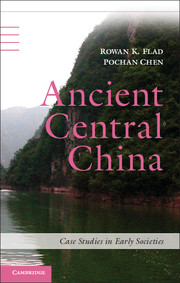Part III - Topographies of Economic Activity and Ritual
Published online by Cambridge University Press: 05 February 2013
Summary
Topographies of Economic Activity and Ritual
Up to this point, we have focused on Central China as a whole by examining the environmental conditions that affected human activity in the Late Neolithic and Bronze Age, the history of research that has constrained our understanding of this region, and the general political and cultural topographies that can be outlined given this previous research. This summary provides a fair foundation for understanding historical change in this region, although, admittedly, there are many holes that will need to be filled by future research.
In the next three chapters, we explore additional aspects of the changing prehistoric landscape of Central China. In particular, we examine loci of economic and ritual activities and consider how they correspond with those with evidence of important political institutions and dense populations. We will see that areas with little evidence for developed political institutions nevertheless were places where important economic and ritual developments took place.
This observation is only made possible through a concerted effort to adopt what Rice (1998) has called a pericentric approach, in which politically peripheral regions are brought to the forefront of examination. By focusing on political peripheries, we examine the extent to which these places were actually crucial to the changing dynamics of societies and cultures across the larger region. In the coming chapters, our particular focus is the Three Gorges region.
- Type
- Chapter
- Information
- Ancient Central ChinaCenters and Peripheries along the Yangzi River, pp. 169 - 170Publisher: Cambridge University PressPrint publication year: 2013



